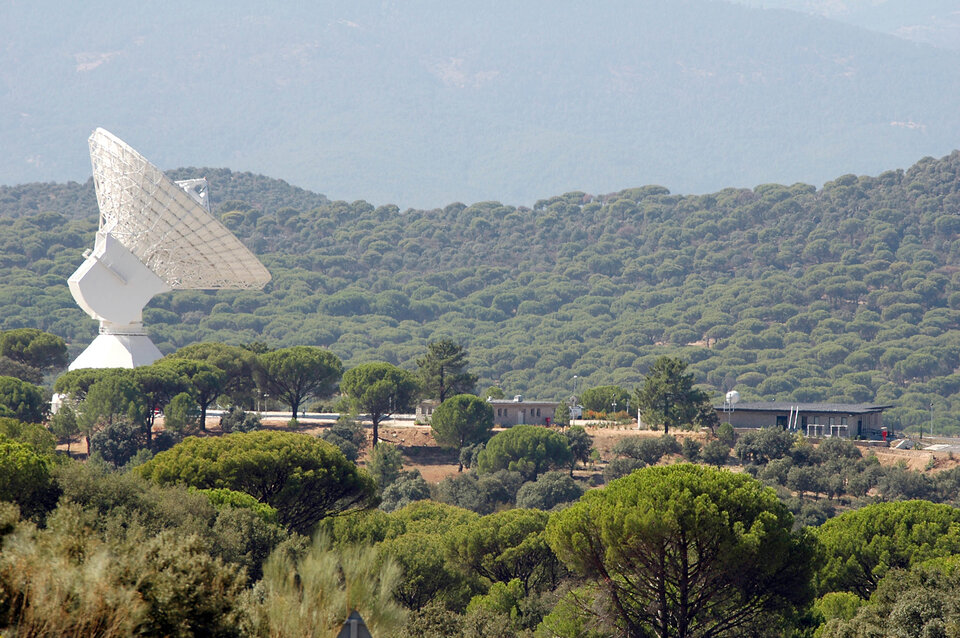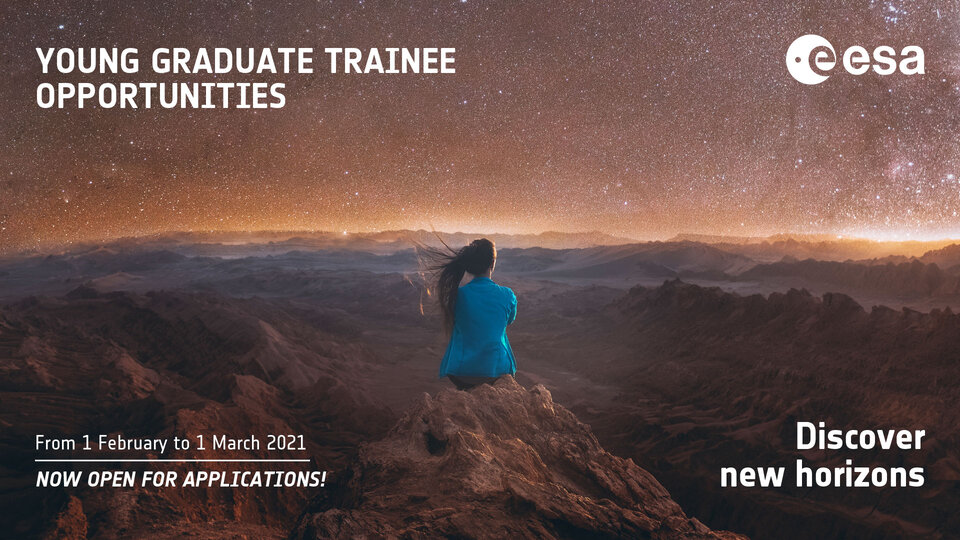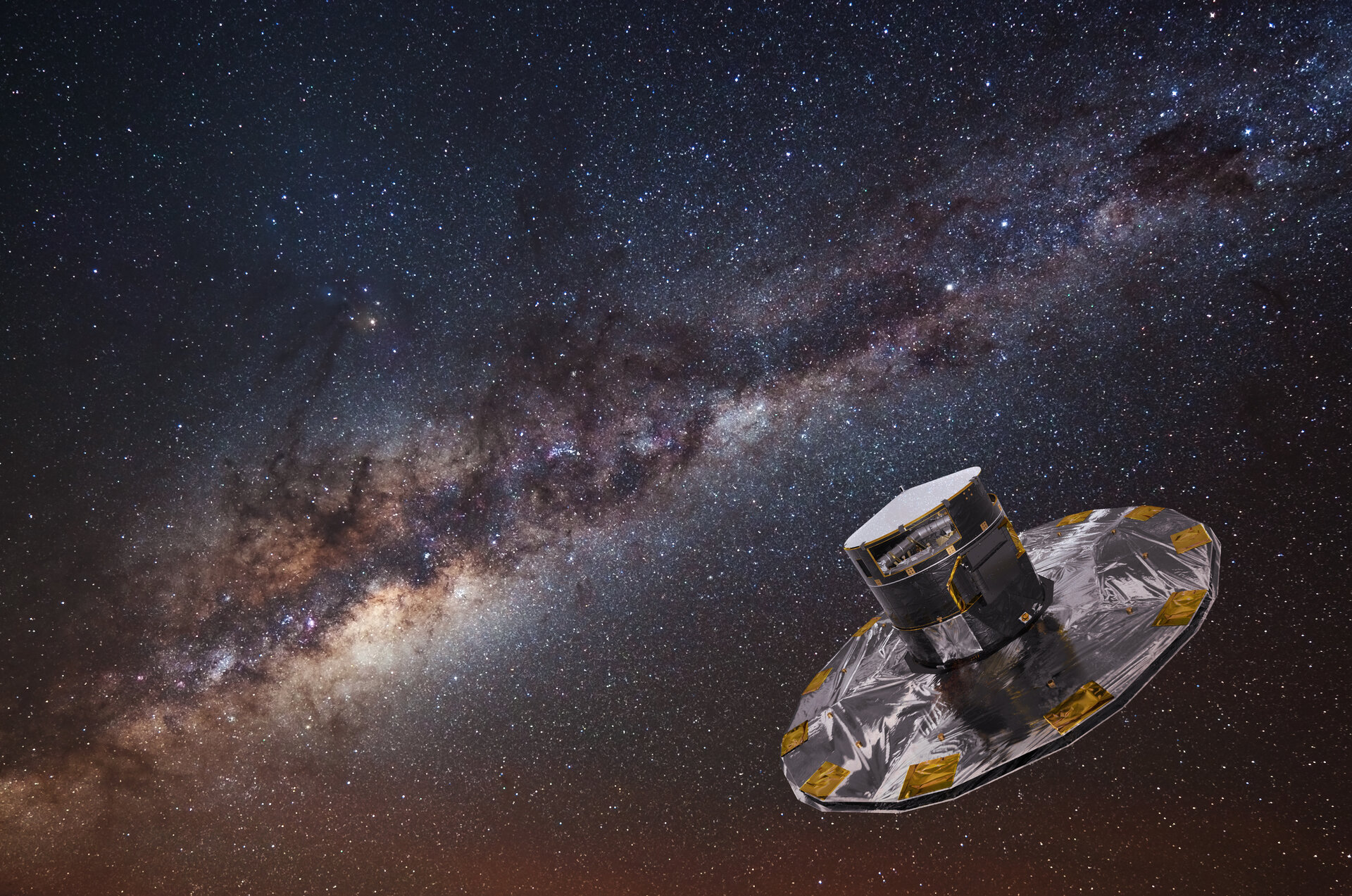Life as an ESA YGT: astrophysics and the Gaia Mission
While we are re-advertising some of our Young Graduate Trainee opportunities, we’ve been getting the lowdown from our current YGTs about the work they do, to give you a flavour of life at ESA and an idea of the range of opportunities currently on offer.

We caught up with 25-year-old Mari-Liis Aru from Estonia who is mid-way through a YGT in astrophysics, working for the Gaia mission team. The Gaia space telescope has been mapping stars in the Milky Way since 2014, creating its most precise catalogue, with measurements of the luminosity, temperature, and distance of stars.
1. Hello Mari-Liis, to kick off, tell us what you do at ESA
The goal of my project is to study the space environment where Gaia operates. Gaia is a space telescope that has observed nearly two billion stars, but we can also use it to collect other types of data.
As the first part of this project, I analyse how smoothly Gaia rotates in order to find out when tiny, rocky particles called micrometeoroids have hit it. These particles are smaller than a grain of sand, but Gaia’s measurements are so precise that they can reveal when the spacecraft’s rotation changes by as little as 0.001%! Still, their appearance in the data is extremely tricky to uncover and this calls for methods like machine learning.
The second part of the project aims to trace back properties of the impacting particles such as mass and velocity, and pin down their statistics. I combine the spacecraft’s geometry and properties with a model of the expected number of micrometeoroids per year, and simulate millions of particle impacts. A comparison between the simulation and measurements might allow us to improve the model.
Knowing this particle occurrence tells us more about how cosmic dust is distributed in the solar system. Also, it’s important to know what kind of conditions a spacecraft will have to endure once ‘parked’ in space in the same spot as Gaia, a special gravitational balance point called the Lagrange 2 point. Once concluded, this work will be useful for all missions to the Lagrange 2 point such as the James Webb Space Telescope.

2. What do you enjoy most about your job?
There is much more to it than crunching numbers! For example, during my first months I had the opportunity to visit ESA’s Astronomy Centre in Spain as part of an annual science conference. We also headed to the deep space antenna that towers over the hills in Cebreros, and communicates with Gaia and other missions. Seeing jaw-dropping facilities like this and meeting people from all phases of mission development has shown me the incredible efforts that go into space exploration.
I appreciate sharing these insights with others, so another memorable opportunity was introducing our missions at the 2019 ESTEC Open Day in the Netherlands to over 9 000 visitors.
And there’s also the community. Along with other YGTs, we shared the experience of coming to a new country and a unique work environment. My supervisor and team made me feel welcome here right away.
3. What did you study?
My bachelor’s degree is in physics from the University of Tartu, Estonia, and I followed this with a master’s degree in space science from University of Liège, Belgium. During my studies, I was involved with a variety of projects like CubeSat engineering, observations with ground-based telescopes and exoplanet simulations.
4. Have you always been passionate about space?
Space became my thing when I was about 16. Becoming a scientist had never occurred to me before that. So if any readers are considering a career in this field, don’t worry if you haven’t always been obsessed with astrophysics. You don't have to be a maths or physics wizard from the very start. It can be scary in the beginning of university studies, but it gets a bit easier every day.
5. And finally, what’s your advice to someone who would like to apply?
First, definitely apply! The application procedure itself makes you assess your experience and goals, and it can give you more clarity about what exactly you want to do. For your cover letter, think about distinctive experiences or qualities that would help you work on the project.
For the interview, prepare to answer very technical questions but don’t forget about what ESA does on a wider scale. If your project is about astrophysics, be informed about missions in other areas, such as Earth observation, and the other way around.
This is a place where you can thrive, go for it!

Apply now for the 2021 YGT opportunities!
Some ESA YGT opportunities are still open for applications. Browse these vacancies and apply now here.
More information about the YGT Programme (including employment conditions, eligibility criteria & selection process).


